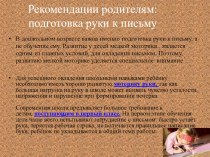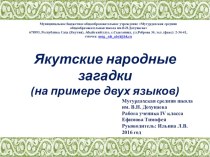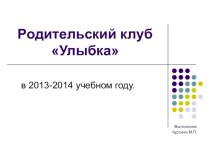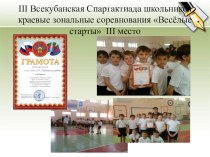- Главная
- Разное
- Бизнес и предпринимательство
- Образование
- Развлечения
- Государство
- Спорт
- Графика
- Культурология
- Еда и кулинария
- Лингвистика
- Религиоведение
- Черчение
- Физкультура
- ИЗО
- Психология
- Социология
- Английский язык
- Астрономия
- Алгебра
- Биология
- География
- Геометрия
- Детские презентации
- Информатика
- История
- Литература
- Маркетинг
- Математика
- Медицина
- Менеджмент
- Музыка
- МХК
- Немецкий язык
- ОБЖ
- Обществознание
- Окружающий мир
- Педагогика
- Русский язык
- Технология
- Физика
- Философия
- Химия
- Шаблоны, картинки для презентаций
- Экология
- Экономика
- Юриспруденция
Что такое findslide.org?
FindSlide.org - это сайт презентаций, докладов, шаблонов в формате PowerPoint.
Обратная связь
Email: Нажмите что бы посмотреть
Презентация на тему Basic translation devices
Содержание
- 2. OverviewTranslation devices within direct translationTranslation devices within
- 3. Basic ClassificationDirect TranslationLiteral TranslationBorrowingCalqueOblique TranslationEquivalenceTransposition/Recategorization/ReplacementModulationAdaptationExpansion and contraction:
- 4. Direct TranslationLiteral Translation ≠ word-for word translation;
- 5. Direct Translation2. Borrowing - transferring an SL
- 6. Direct Translation3. Calque involves the literal translation
- 7. Oblique TranslationOblique translation is used when the
- 8. Oblique TranslationEquivalence replicate the same situation as
- 9. Oblique Translation2.Transposition/Recategorization/Replacement - the process of replacing
- 10. Oblique TranslationExamples of transpositions include:• Nominalizations (noun to
- 11. Oblique Translation3. Modulation refers to the process
- 12. Oblique Translation• "Never turn off the refrigeration unit"
- 13. Oblique Translation4. Adaptation – extreme limit of
- 14. Oblique Translation
- 15. Expansion & ContractionExpansion (explicitation)Making smth which implicit
- 16. Recycling Information (ST expansion)taking information from one
- 17. Generalizing and ParticularizingGeneralizingmaking information in the ST
- 18. Generalizing and Particularizing# Although, there are many
- 19. Compensationmaking up for the loss of certain
- 20. Compensation TypesCompensation in kind replacing one type
- 21. Compensation Types3) Compensation by splitting - used
- 22. RestructingThe sequence in which information is presented
- 23. Iconic LinkageMinimizing variation and ensuring the same
- 24. Syntactic devices: Partitioning - either replacing in
- 25. Скачать презентацию
- 26. Похожие презентации
OverviewTranslation devices within direct translationTranslation devices within oblique translationExpansion and Contraction: recycling informationGeneralizing and ParticularizingCompensationRestructingIconic LinkagePure syntactic devices




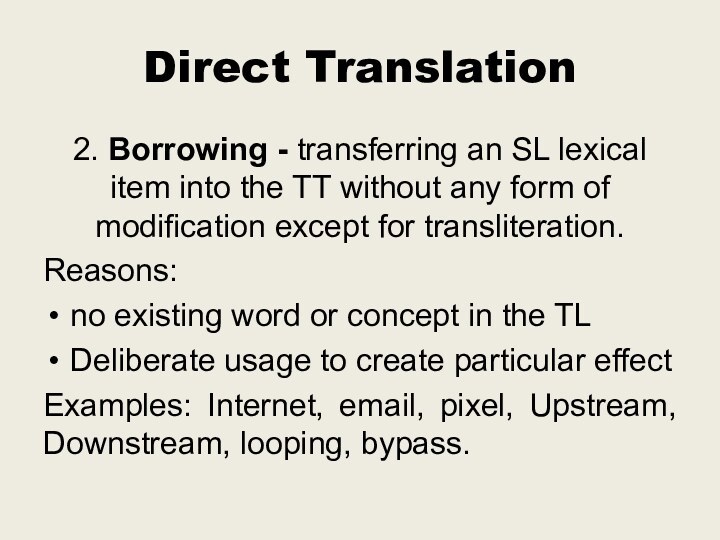



















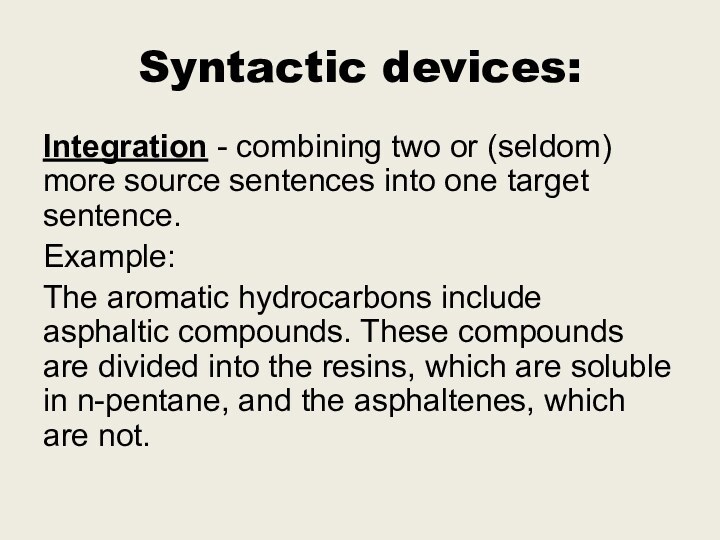
Слайд 2
Overview
Translation devices within direct translation
Translation devices within oblique
translation
devices
Слайд 3
Basic Classification
Direct Translation
Literal Translation
Borrowing
Calque
Oblique Translation
Equivalence
Transposition/Recategorization/Replacement
Modulation
Adaptation
Expansion and contraction: recycling
information
Generalizing and Particularizing
Compensation
Restructing
Iconic Linkage
Pure syntactic devices: partitioning and integration
oblique translation
Слайд 4
Direct Translation
Literal Translation ≠ word-for word translation;
45,3
% - journalistic texts, 39,6 % - technical texts
It
involves producing a TT which reflects the content and features of the ST as closely as possible and only deviating from this where necessary in order to produce a TT which is grammatically correct and intelligible. Can be: word-by-word, group-by-group, clause-by-clause
No any: additions, omissions, paraphrasing and etc.
Слайд 5
Direct Translation
2. Borrowing - transferring an SL lexical
item into the TT without any form of modification
except for transliteration.Reasons:
no existing word or concept in the TL
Deliberate usage to create particular effect
Examples: Internet, email, pixel, Upstream, Downstream, looping, bypass.
Слайд 6
Direct Translation
3. Calque involves the literal translation of
the individual constituent parts of an SL word or
phrase to create a new term, or neologism, in the TL.Examples: skyscraper, semi-conductor
Note: introducing new words without good reason is inadvisable, particularly where there are perfectly acceptable alternatives in the TL.
Слайд 7
Oblique Translation
Oblique translation is used when the grammatical,
pragmatic and lexical differences between the SL and TL
are too significant to allow direct translation.Straightforward replacement is no longer useful because of the stylistic or linguistic features of the source text
Слайд 8
Oblique Translation
Equivalence replicate the same situation as in
the original whilst using completely different wording.
It is used
when translating more directly would result in a translation which loses meaning or impact
the idiomaticity or flow (set phrases)
Examples: Danger! -Risk of Death - Опасность
Wet Paint -Freshly Painted – Окрашено!
Слайд 9
Oblique Translation
2.Transposition/Recategorization/
Replacement - the process of replacing one
class or type of word in the ST with
another type of word in the TT without changing the meaning. It is any change in the target text at the morphological, lexical and syntactic levels.Required because of differences in the way information is expressed in the SL and the TL to avoid awkward or unintelligible translation.
Слайд 10
Oblique Translation
Examples of transpositions include:
• Nominalizations (noun to verb):
"The regulation of the heating system is carried out
by the main computer" vs. "The main computer regulates the heating system"• Passive to active: "The new standard was approved by all member states" vs. "All member states approved the new standard".
• Passive to imperative: safety mechanism is engaged prior to performing maintenance work" vs. "Engage the safety mechanism before carrying out maintenance work".
Слайд 11
Oblique Translation
3. Modulation refers to the process of
changing the form of information by presenting it from
a different point of view.Some modulations are compulsory (or fixed), while others (known as free or optional modulations) are not.
Modulations might involve changing a sentence from a positive to a negative
Слайд 12
Oblique Translation
• "Never turn off the refrigeration unit" vs.
"Leave the refrigeration
turned on at all times". "
• "Easy to use" vs. "Not difficult".
• "Protects against most viruses" vs. "Only allows a few viruses through"
• "This X-ray machine does not damage photographic films" vs. "Photographic films can be scanned by this X-ray machine without being damaged".
other modulations involve a concept “part for whole” or “whole for part”
Слайд 13
Oblique Translation
4. Adaptation – extreme limit of translation
as it may involve a significant amount of deviation
from the ST.Key procedures - cultural substitution, paraphrasing and omission (final stage – transcreation – extremely free form of translation)
It is used when the ST describes a situation or concept which does not exist in the TL culture or which does not have the same connotations or relevance to members of the TL audience
Слайд 15
Expansion & Contraction
Expansion (explicitation)
Making smth which implicit in
the ST explicit:
- Adding explanatory phrases to clarify terms;
Adding
connectors to improve cohesion of TT# Workers of all industries / ……….
# Gun license / ………
Contraction
Making something less detailed in the TT
Reasons:
Adapt the TT to the perceived expectations
# The proposal was rejected and repudiated /…..
Слайд 16
Recycling Information
(ST expansion)
taking information from one part of
a text and using or reusing it somewhere else
in the text# Maintenance guide:
Usually modular in design (system integration, equipment maintenance features, safety measures, entering specification information…..faulty component replacement)
NOTE: recycling does not involve introducing new information into a text
Слайд 17
Generalizing and Particularizing
Generalizing
making information in the ST less
detailed when it is transferred to the TT
Forms: 1)
omitting information 2) replacing a specific word with a word which has a less specific meaningReasons: 1) no similar specialized or specific word 2) translating a specialized text for a general audience
Particularizing/specification
using more specific term to the one contained in the ST
Reasons: 1) generic term used in the ST is simply too broad in the TL 2) generic term have connotations which are undesirable in the TT
Challenge: to ensure the understanding of the subject matter of the text sufficiently
Слайд 18
Generalizing and Particularizing
# Although, there are many factors
contributing to corrosion under conventional insulation….. / …
It is
urgent to discuss the issues concerning waste utilization…/…
Слайд 19
Compensation
making up for the loss of certain source
text features in the target text by introducing other
features elsewhere in the translation which are not necessarily present in the source text.# translation of humorous text or film
In scientific or technical texts - redistribution information and textual features throughout the text - to balance out the information load or make the style more consistent
Слайд 20
Compensation Types
Compensation in kind replacing one type of
textual feature in the ST with another type of
feature in the TT (infinitive forms – to imperative forms);Compensation in place is used to make up for the loss of a particular feature or effect at a particular point in the ST by recreating it elsewhere in the TT;
Слайд 21
Compensation Types
3) Compensation by splitting - used where
the ST contains a word for which there is
no corresponding TL word which conveys the same range of meanings (# fastener = bolts, screws, clips, clamps and pins)4) Compensation by merging allows us to condense features or information presented in the ST and to present it in a shorter phrase or even in a single word
Слайд 22
Restructing
The sequence in which information is presented to
readers in a text or even in individual sections,
paragraphs or sentences can play an important role in the success of a translation.#Table of content
Слайд 23
Iconic Linkage
Minimizing variation and ensuring the same information
is expressed in the same way can improve the
usability of translations:Technical text: grammatical parallel constructions
Scientific texts: one and the same terms
Reasons: it improves clarity, aids learning and comprehension, and looks more consistent and professional.
Слайд 24
Syntactic devices:
Partitioning - either replacing in translation
of a source sentence by two or more target
ones or converting a simple source sentence into a compound or complex target oneInner partitioning Outer partitioning
(Verbal Complexes) (Sentence level)








